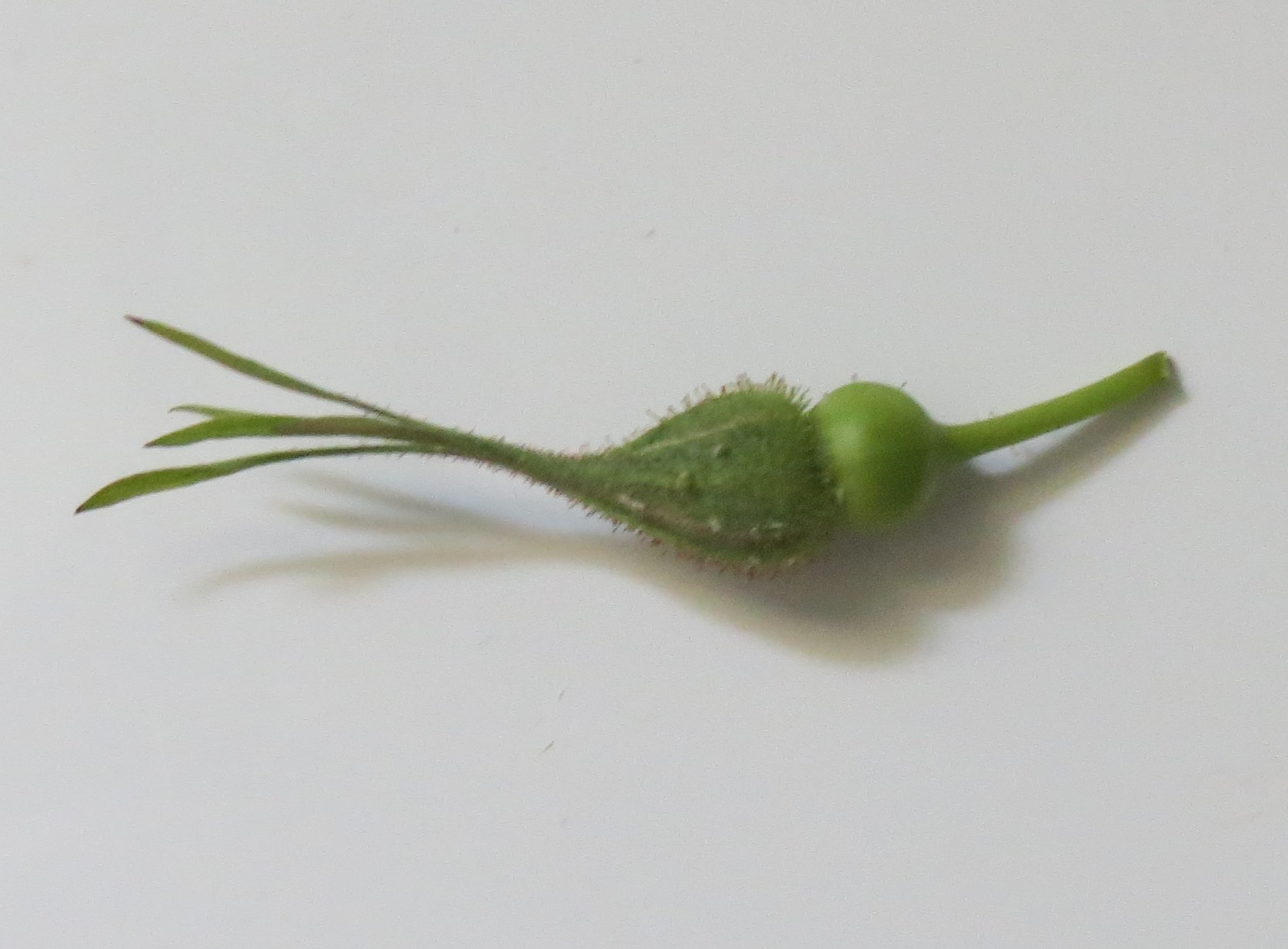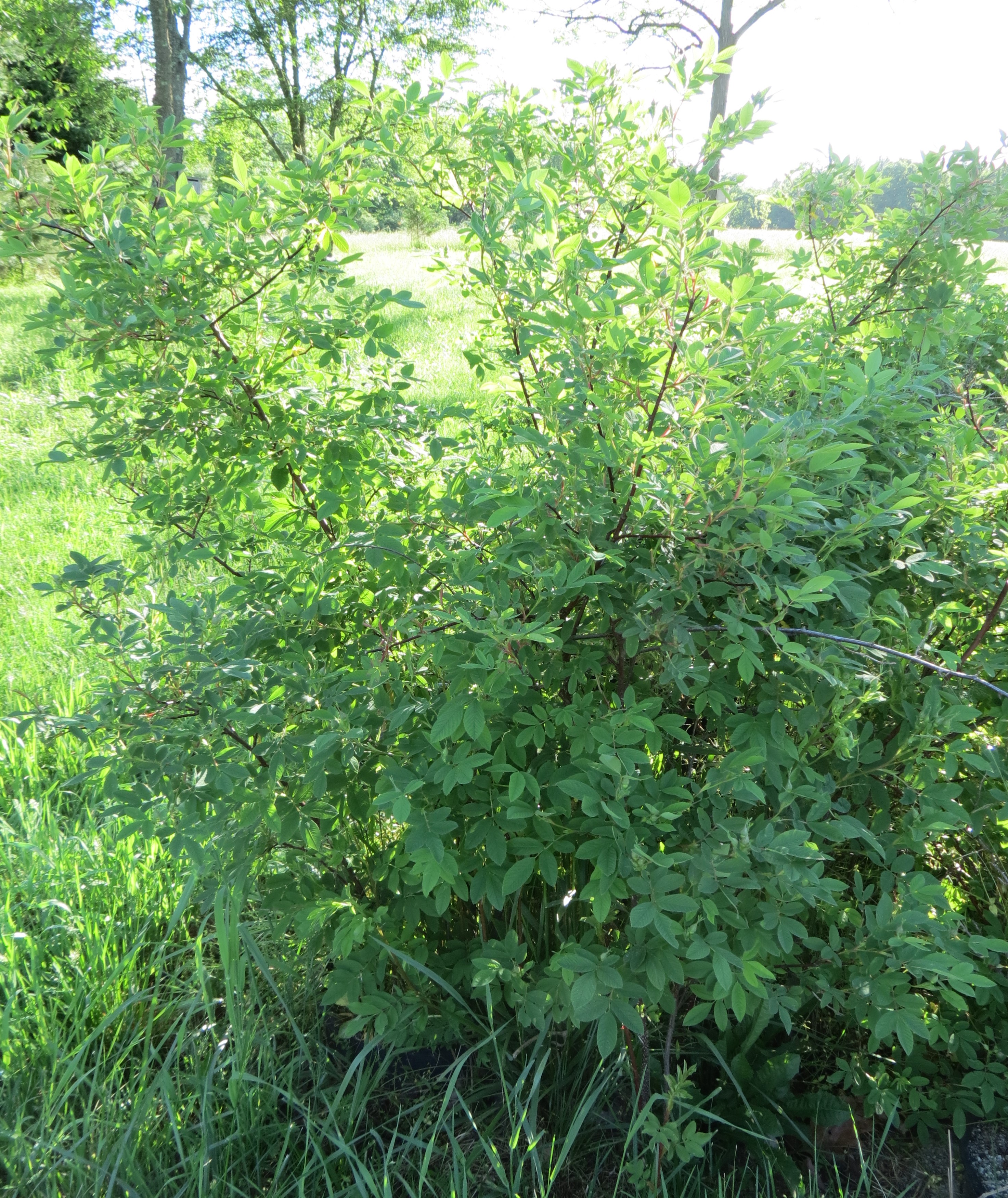I would be grateful for assistance in identifying this rose. Note the following details:
Collected: With permission along a VERY rural roadside near Caneadea, NY (south-western New York). Now growing in south-central Pennsylvania.
Height: 4-5 feet
Stems: Older stems reddish-brown
Prickles: Sparse to absent on young stems and the upper portions of stems. Sometimes very abundant on the lower portion of older stems.
Suckering: Abundant
Leaflets: Generally 5 or 7; rarely 3
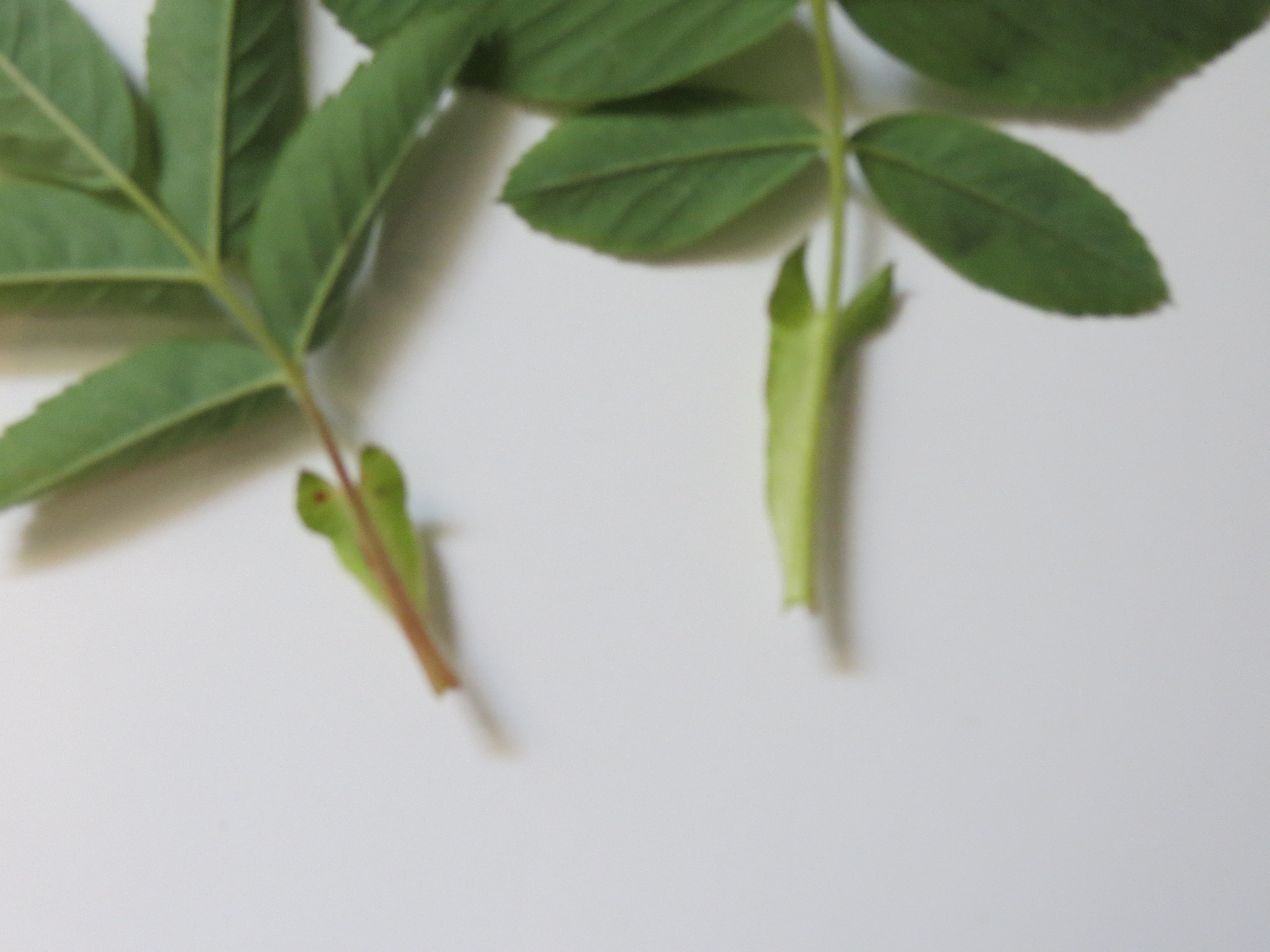
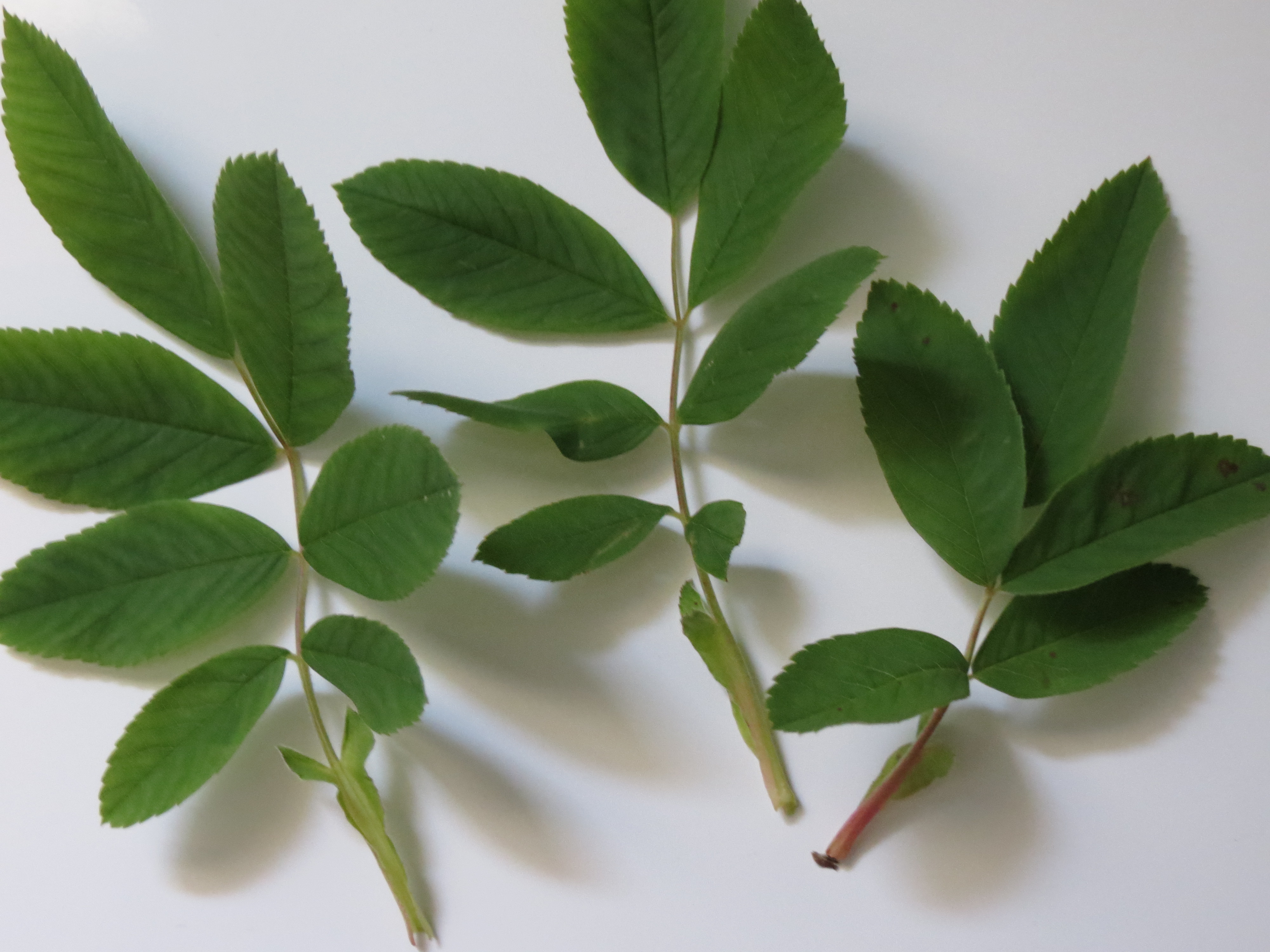
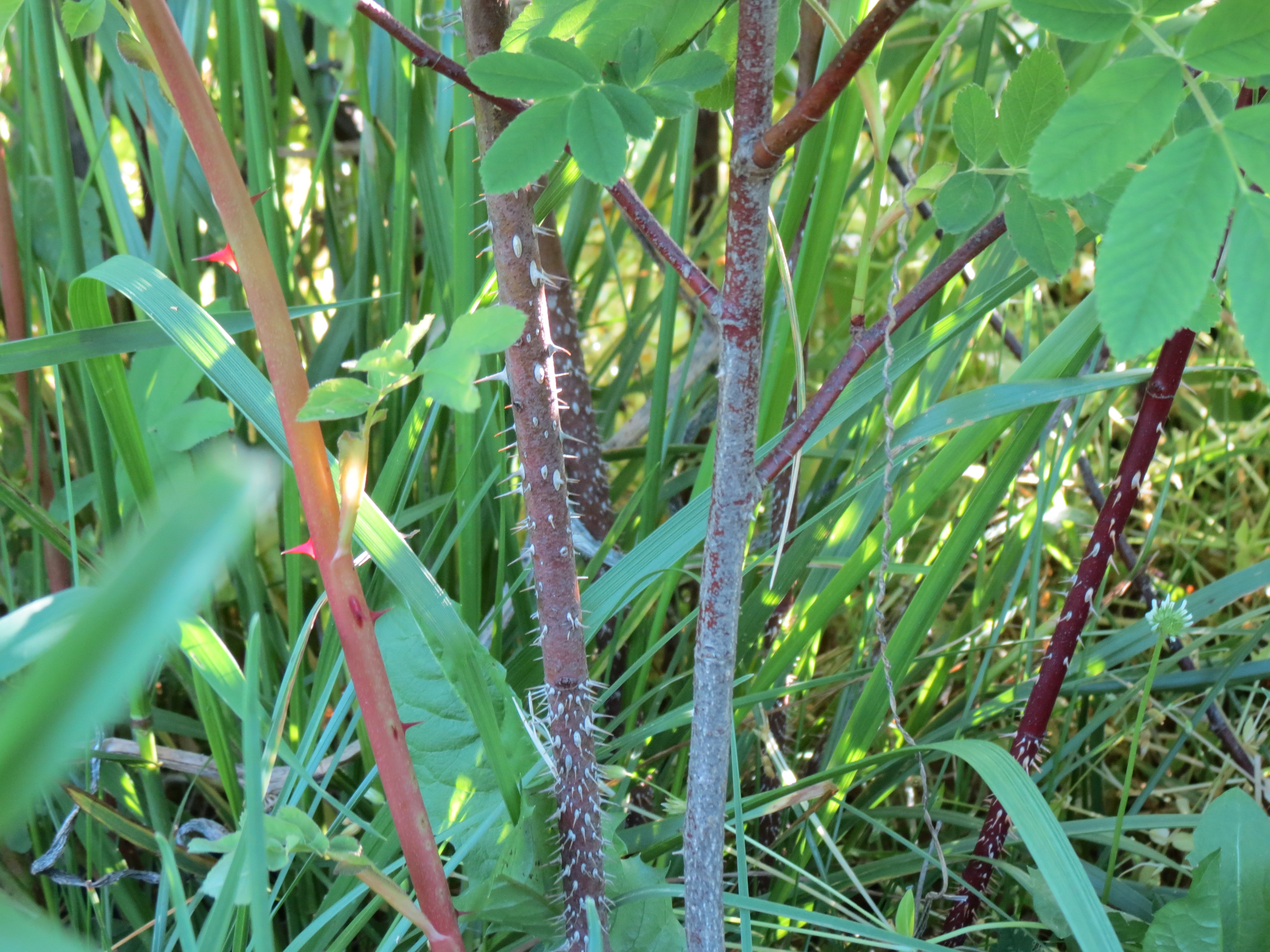
Final Image. Note that the opposite sides of stipules are folded towards each other, sometimes resulting in the stipules appearing narrower than they actually are.
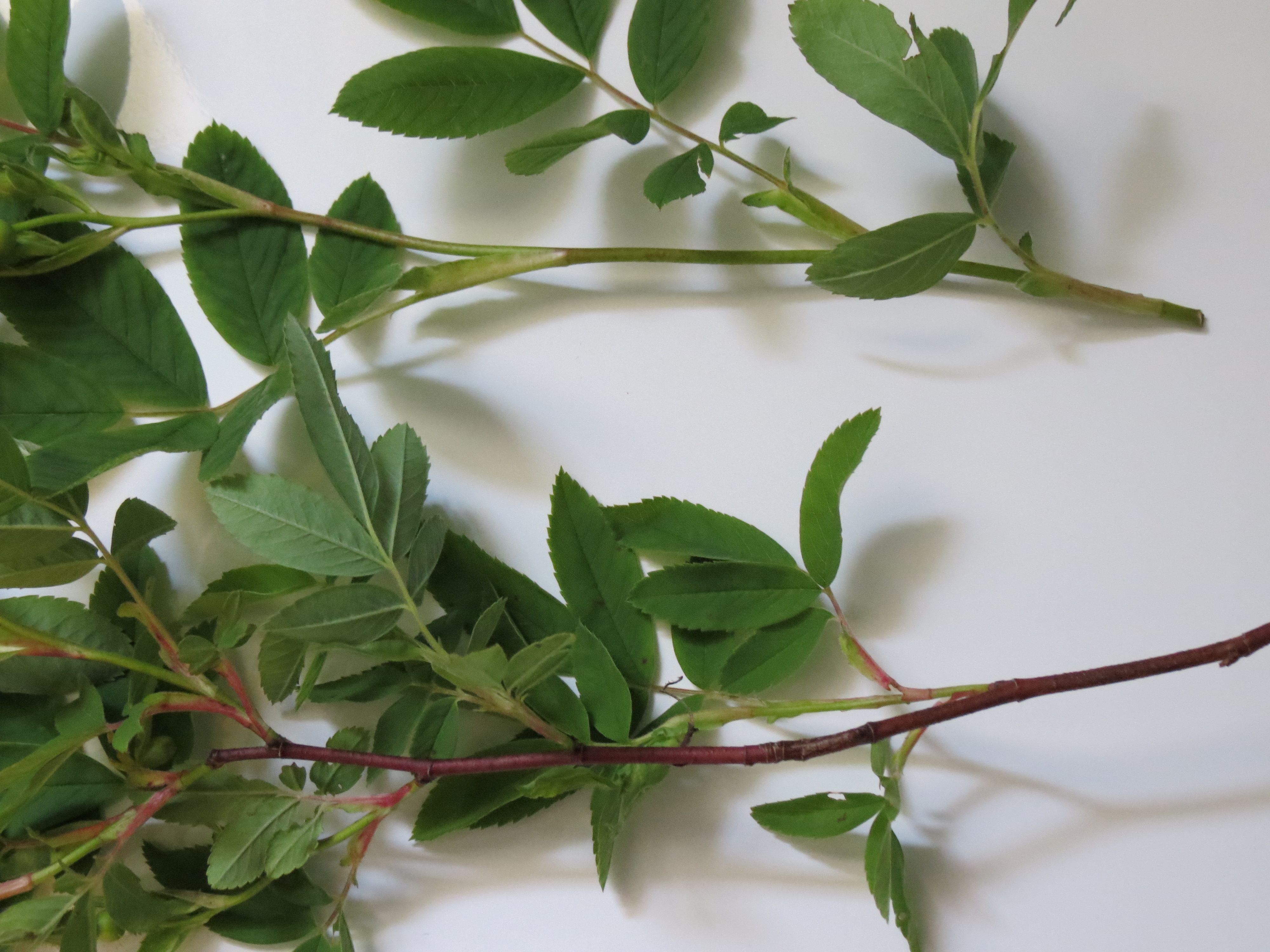
I would say that it is R. blanda. The absence of prickles on the upper stems and the lack of infrastipular prickles are the clearest indicators.
Stefan
Stefan, thank you for your input regarding the identification of this rose. When I had first collected it, I had speculated (largely based upon its collection location right next to a large pond) that it was probably R. palustris. I was almost certainly wrong, and your proposed identification as R. blanda is almost certainly correct.
In addition to Stefan’s identification, Dr. David Zlesak graciously offered to take measurements of this rose’s pollen grains, which came back as consistent with the rose being a diploid (as would be expected for R. blanda, and which did tend to rule out some other North American species). I also asked Dr. Simon Joly (author of some articles on roses of eastern North America) for his insight, and he wrote:
“Hi, This is Rosa blanda. It lacks infrastipular prickles on the young branches, it lacks glands on hypanthium, and the leaflets and stipules shapes are typical of R. blanda.”
It appears that the mystery has been solved! Thanks so much!
Regards,
Matt Lustig




